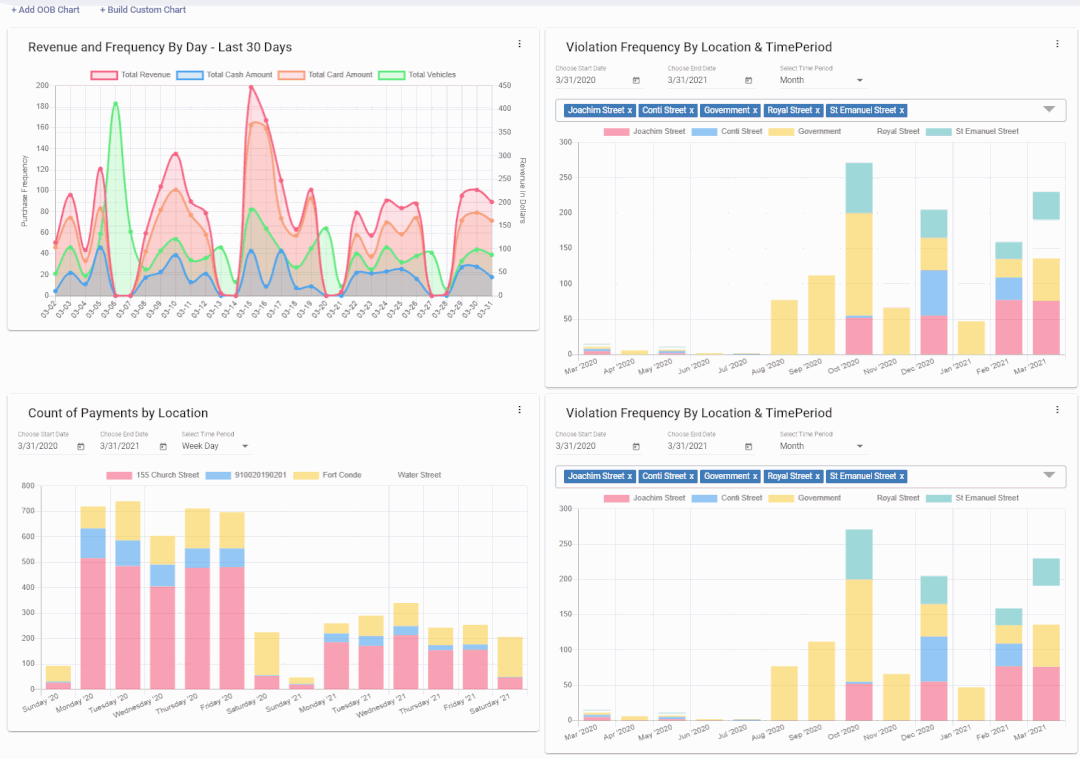For those responsible for enforcing compliance with parking regulations, the daily question is, “how good of a job are we doing”? As a good friend of mine puts it, do we get a “smiley face” or a “frowny face” today? Measuring the performance of a parking enforcement team is not easy. There are many variables that hinder or help enforcement efforts. We look at things we can measure in our programs. The old and true business adage goes, “If you can’t measure it, you can’t improve it.”
RISETEK Global’s innovative, intelligent, state-of-the-art solutions combined with our “best practices” industry experience allow us to deliver proven results that optimize our customer’s business performance and empower them to achieve next-level success.
Interested in learning more about how VERGE can help you more effectively manage your parking enforcement program?Contact us using the form below or email us at sales@risetekglobal.com to find out more.
The following are some things we can measure and thus act as a barometer of our enforcement programs performance:
- Compliance – Compliance is simply a measure of the percentage of vehicles parked according to your regulations. How many parked vehicles have paid for their parking? Have a valid permit? Or have not exceeded the posted time limit?
- Citation Issuance Rate – While no parking program should have a “quota” for how many parking citations each officer should issue a day, a healthy program must see a value for the payroll spend on enforcement staff. Many watch their “gap reports” as a tool to assess their enforcement staff and routing. Others compare citations issued to parking session payments. A simple comparison of citation revenue to enforcement labor costs is also a good view. All are good measures of your enforcement issuance rate.
- Citation Payment Rate – One of the most important measures of an enforcement program is the percentage of citations issued that are actually paid. It does little to issue a lot of citations if a low percentage of them are actually paid. Collection rates for municipalities will vary greatly depending upon how the program is managed. Healthy programs will generally collect over 70% of the citations issued. Good programs have policies and tools in place to encourage people to pay the parking citation. Sending notices to registered owners is the most common tool for municipalities as they have access to DMV records to access mailing addresses.
For commercial parking enforcement using DMV records for noticing purposes is against the law, leaving the private sector limited to the low accuracy of commercially available databases. Some states allow municipalities to place “holds” on vehicle registrations for those with delinquent parking citations. Holds are a great tool, but often only available after multiple unpaid citations for a vehicle. Booting and towing is the most effective tool of last resort for the collection of unpaid citations. Not only will booting allow for the collection of multiple citations at one time, but it is also a strong deterrent for people to not pay a citation in the first place. - Scofflaw Balances – Measuring the ratio of your annual citation revenue collected against your scofflaw balance is another way to measure your program performance. If you collect $1,000,000 a year in parking citations and have a total balance of $1,000,000 in scofflaw citations your ratio would be 1 to 1. Understanding that many cities “write off” by policy or statute parking citations after a set number of years this ratio is hard to compare one program against another, however, if you measure your ratio year on year it will act as a measure of the health of your program.
- Citation Accuracy – Every parking enforcement manager has a goal of only issuing accurate parking citations. Obviously, this goal is not a realistic one to achieve, but it is a good one to shoot towards. Everyone should be closely monitoring citation voids. How many citations are being voided each month? What type of citations are being voided? Which officers are having more citations voided? Which zones/streets have the highest void rate? A healthy enforcement program should be voiding less than 3% of their citations, however, policies and technology health can greatly affect your void rates. It is more important to monitor void rates by officers and type of citation, than it is to compare your program against another program.
All of these KPIs require access to data and accessing data can often be a challenge. The biggest hill to climb for most parking managers is the amount of time that goes into pulling the data into a valuable KPI report format. This is where a data aggregation and reporting tool like VERGE delivers real value. The ability to see all of your KPI reports in real-time in one place without having to manually pull data from multiple systems allows managers to manage more effectively. The ability to respond to changes in your KPI reports quickly saves valuable time as well as your revenue and expense budget.








